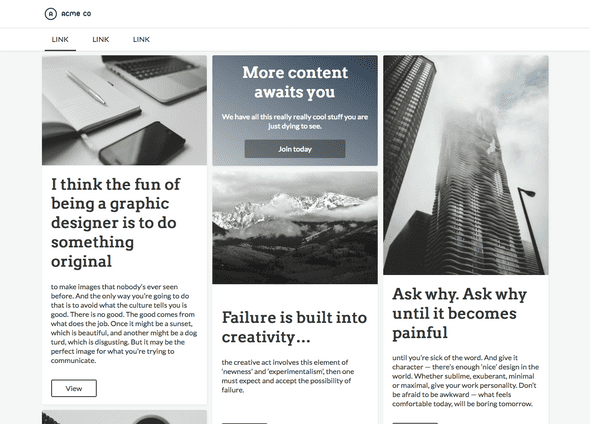It goes without saying that the MERN stack is one of the most popular stacks for modern web development and, as a result, there exist many boilerplates. However, in my opinion most of these boilerplates include more than is necessary to get started. While it is nice to have what is included I prefer to take a more additive approach when developing. Therefore, I desired something more minimal.
For this project I distilled down whats included to what I always find myself using throughout all my MERN projects. For my build tools I've included Webpack 4 and Babel. On the front-end I've included Redux, Redux-saga, Axios and Styled Components. For the back-end the only extra library that is added,aside from Mongoose, is Morgan for logging. Finally, for testing I've included Mocha, Chai and Enyzme.
GitHub repo:
Project structure
client/
components/
constants/
containers/
dist/
reducers/
styles/
app.js
index.html
reducer.js
store.js
testSetup.js
sever/
controllers/
logs/
models/
routes/
services/
app.jsThe client
The client is where the React project resides. The purpose of each folder and file is the following:
- components - where all presentational components go. Here I like to give each component its own folder and in the folder have the following files
ComponentName/
index.js
test.js
styles.scss (if not using styled components)- constants - Where the action types for redux are places.
- containers - For any components that provide data and behavior to any presentational component. These are usually reserved for components that interface with Redux.
- reducers - For Redux reducers.
- styles - Any global styles go here.
- dist - Where the project is built when calling
npm run deploy:client. - app.js - The entry point for the react app.
- index.html - The HTML file, pretty standard.
- reducer.js - Where reducers are combined.
- store.js - The store code for Redux.
- testSetup.js - Sets up js-dom and enzyme for unit testing.
Included components
I've included in this project some useful components I created and find myself reusing quite a lot. Below is a picture of all the components in action together:
- Navbar - Just a simple Navbar with the option to add a logo and include links.
- Card - Standard card component, Allows one to set the image, title, paragraph and button link.
- Billboard - A card-like component that allows one to set the background and display a call to action styled message along with a link as a button. For an example see the first row middle column in the image above.
- Masonry - A 3 column masonry grid for displaying cards. I found myself displaying card grids throughout may of my projects and often times than not the images are of different heights. Using a traditional grid, this will result in extra whitespace and miss-alignment. So I decided to implement my own Masonry component. While it is not as flexible as something like Masonry.js, it gets the job done for what I want.
The server
Nothing really fancy here, I've just included the typical directories:
- models - Mongoose models.
- controllers - Functions for fetching and preparing data from models.
- logs - Self explanatory.
- routes - Endpoints in the app.
- services - Bits of code that can be reused by controllers. For for example a function to fetch data that is used in multiple places.

